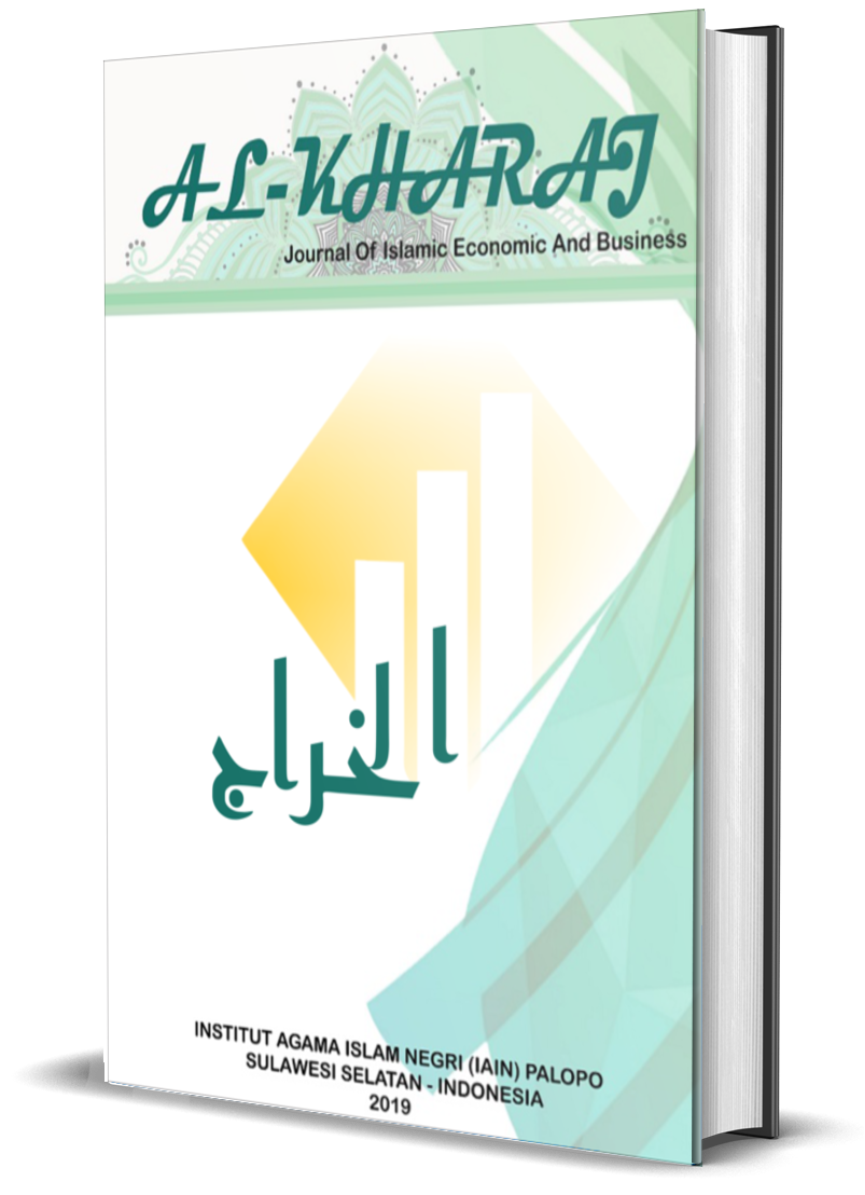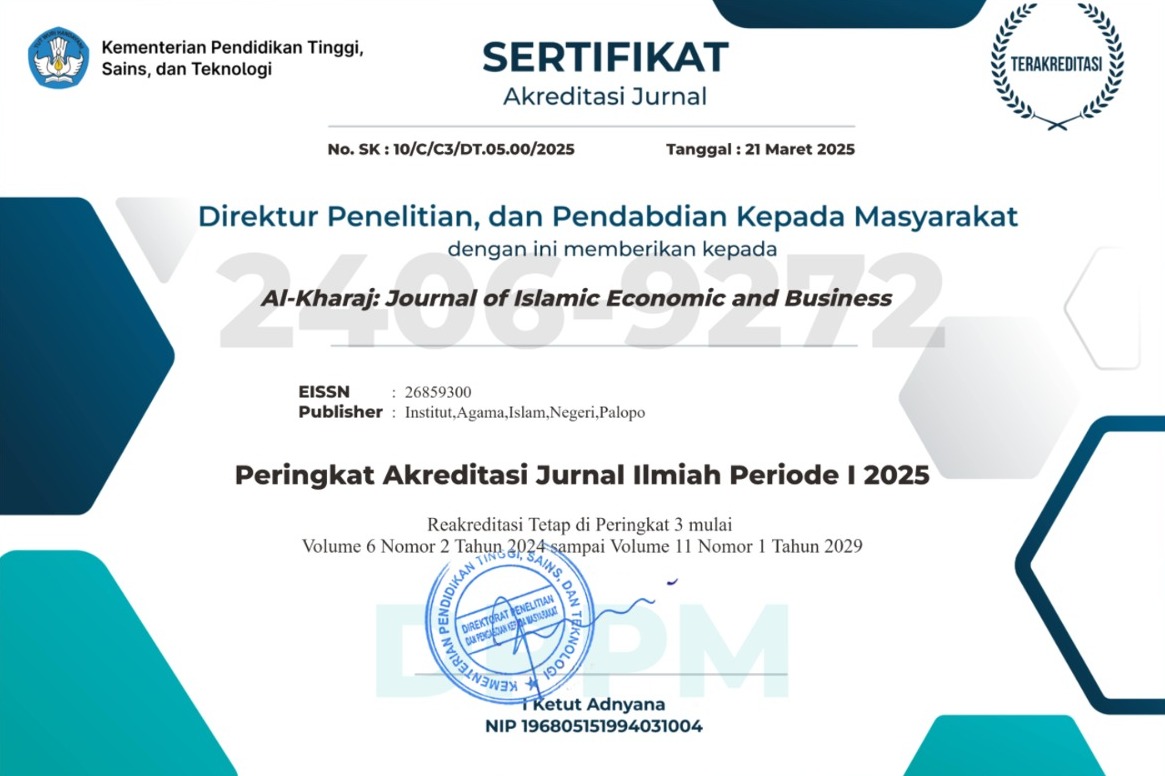The Influence of Service Quality and Service Experience on Word of Mouth (WOM ) Through Perceived Value of Tour Travel Congregants in Malang City
DOI:
https://doi.org/10.24256/kharaj.v7i3.7634Keywords:
Service Quality, Service Experience, Received Value, Word Of MouthAbstract
This study aims to analyze the influence of service, quality, and service experience on word of mouth (WOM) through perceived value on tour travel pilgrims in Malang City. This type of research is a quantitative approach research. The results of the calculation are 100 samples of Cooper and Emory. This study uses the Moderated Regression Analysis (MRA) model and Structural Equation Model (SME) analysis based on Partial Least Square (PLS) with the help of SmartPLS version 3.0. The results of the study show that the service quality variable has a significant and positive influence on word of mouth on tour travel pilgrims in Malang City. The service experience variable does not have a significant influence on word of mouth on tour travel pilgrims in Malang City. The service quality variable has a significant and positive influence on received value on tour travel pilgrims in Malang City. The service experience variable has a significant and positive influence on received value on tour travel pilgrims in Malang City. The received value variable has a significant and positive influence on word of mouth among tour travel pilgrims in Malang city. The received value variable can mediate the relationship between service quality and word of mouth with a positive and significant influence on word of mouth. The received value variable can mediate the relationship between service experience and word of mouth with a positive and significant influence on word of mouth.
References
Abdolvand, M. A., dan Norouzi, A. (2012). The effect of customer perceived value on word of mouth and loyalty in B-2-B marketing. Research Journal of Applied Sciences, Engineering and Technology, 4(23), 4973-4978.
Abdillah, Willy, dan Hartono, Jogiyanto. (2015). Partial Least Square (PLS) Alternatif Structural Equation Modelling (SEM) dalam Penelitian Bisnis. Penerbit ANDI.Yogyakarta.
Anderson, Eugene W. (1998). Customer Satisfaction and Word of mouth, Journal of Service Research, May.
Arikunto, S. (2002). Metodologi Penelitian Suatu Pendekatan Proposal. PT.Rineka Cipta. Jakarta
Babin, Barry. (2015). “Modelling Consumer Satisfaction and Word of mouth: Restaurant Patronage In Korea”. The Journal Of Service Marketing.
Biedenbach, G., dan Marell, A. (2010). The impact of customer experience on brand equity in a business-to-business services setting. Journal of Brand Management, 17(6), 446–458.
Brown, J. O., Broderick, A. J., dan Lee, N. (2007). Online Communities : Conceptualizing the Online Social Network. Journal of Interactive Marketing, 21(3), 2–20.
Carlos Fandos Roig, J., Sanchez Garcia, J., Angel Moliner Tena, M., dan Llorens Monzonis, J. (2006). Customer perceived value in banking services. International Journal of Bank Marketing, 24(5), 266–283.
Casidy, R., dan Wymer, W. (2016). Linking prestige perception with consumption experience, loyalty, and WOM. Marketing Intelligence and Planning, 34(4), 540–558.
Fandy Tjiptono. (2008) .Strategi Pemasaran, Edisi III. CV. Andi Offset.Yogyakarta.
Frenzen, J., dan Nakamoto, K. (1993). Structure, Cooperation, and the Flow of Market Information. Journal of Consumer Research, 20(3), 360.
Gallarza et al. (2016). Intrinsic value dimensions and the value satisfactionloyalty chain: a causal model for services. Journal of Services Marketing. 30 (2), hlm. 165–185.
Ghozali, Imam. (2006). Structural Equation Modeling Metode Alternatif dengan Partial Least Square. Badan Penerbit Universitas Diponegoro. Semarang.
Harrison–Walker, L. Jean. (2001). The Measurement of Word-of Mouth Communication and an Investigation of Service Quality and Customer Commitment as Potential Antecedents. Journal of Service Research, 4(1) Agustus, hal. 60–75.
Helkkula, A., dan Kelleher, C. (2015). Circularity of customer service experience and customer perceived value. Delivered by Publishing Technology to : Deakin University Library. 9(1), 37 53.
Kotler, Philip and Kevin Lane Keller, (2012): Marketing Management New Jersey: Pearson Pretice Hall, Inc.
Malhotra, Naresh K., and David F. Birks. (2012). Marketing Research: An Applied Approach 3rd European Edition. Prentice-Hall.England
Roy, S., S., S., dan Bhatia, S. (2019). Service quality versus service experience: An empirical examination of the consequential effects in B2B services. Industrial Marketing Management, 82 (February 2017), 52–69.
Solimun. (2008). Memahami Metode Kuantitatif Mutakhir: Structural Equation Modeling dan Partial Least Square. Program Studi Statistika FMIPA Universitas Brawijaya. Malang.
Solimun. (2010). Analisis Variabel Moderasi Dan Mediasi. Program Studi Statistika FMIPA-UB.Malang.
Sugiyono. (2006). Metode Penelitian Kuantitatif Kualitatif dan RdanD. Alfabeta. Bandung.
Sumarsono. (2007). Pengantar Semantik. Penerbit Pustaka Pelajar. Yogyakarta.
Downloads
Published
How to Cite
Issue
Section
Citation Check
License
Copyright (c) 2025 Farida Karimatun Nisa, Abdul Khodir Djaelani, Jeni Susyanti

This work is licensed under a Creative Commons Attribution-ShareAlike 4.0 International License.
Authors retain copyright and grant the journal right of first publication with the work simultaneously licensed under a Creative Commons Attribution-ShareAlike 4.0 International License. In line with the license, authors are allowed to share and adapt the material. In addition, the material must be given appropriate credit, provided with a link to the license, and indicated if changes were made. If authors remix, transform or build upon the material, authors must distribute their contributions under the same license as the original.









